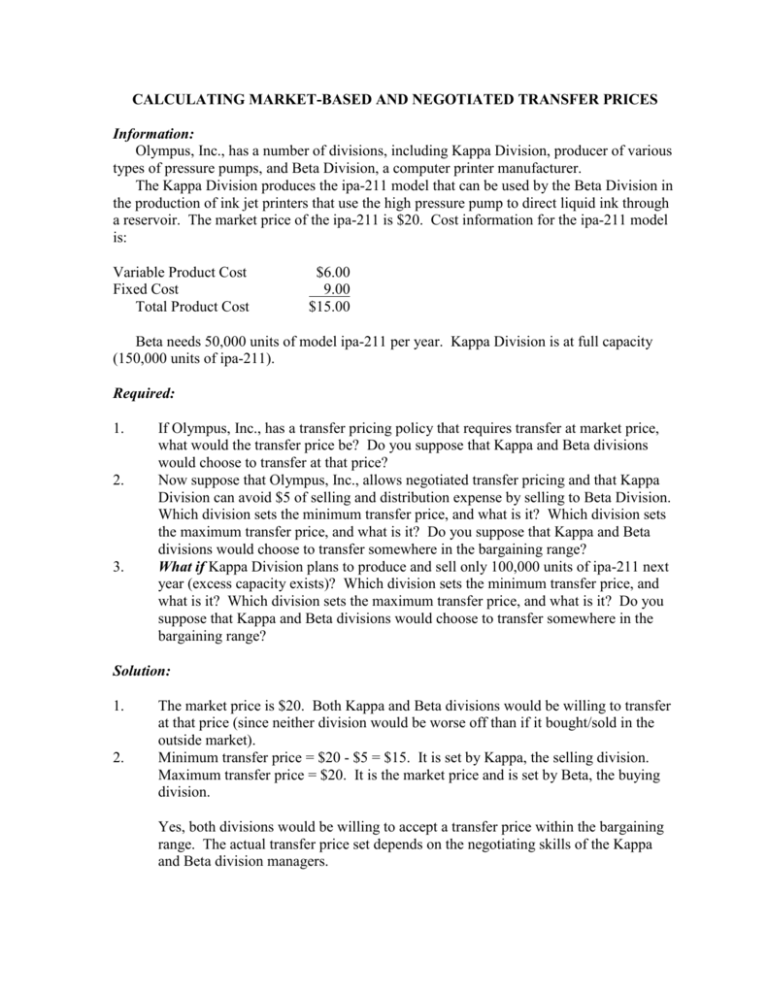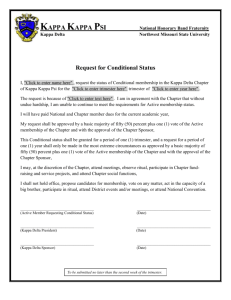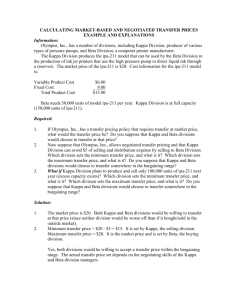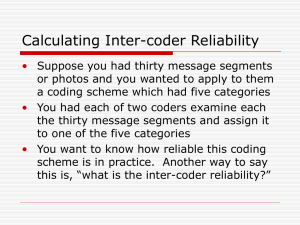Negotiated Transfer Pricing
advertisement

CALCULATING MARKET-BASED AND NEGOTIATED TRANSFER PRICES Information: Olympus, Inc., has a number of divisions, including Kappa Division, producer of various types of pressure pumps, and Beta Division, a computer printer manufacturer. The Kappa Division produces the ipa-211 model that can be used by the Beta Division in the production of ink jet printers that use the high pressure pump to direct liquid ink through a reservoir. The market price of the ipa-211 is $20. Cost information for the ipa-211 model is: Variable Product Cost Fixed Cost Total Product Cost $6.00 9.00 $15.00 Beta needs 50,000 units of model ipa-211 per year. Kappa Division is at full capacity (150,000 units of ipa-211). Required: 1. 2. 3. If Olympus, Inc., has a transfer pricing policy that requires transfer at market price, what would the transfer price be? Do you suppose that Kappa and Beta divisions would choose to transfer at that price? Now suppose that Olympus, Inc., allows negotiated transfer pricing and that Kappa Division can avoid $5 of selling and distribution expense by selling to Beta Division. Which division sets the minimum transfer price, and what is it? Which division sets the maximum transfer price, and what is it? Do you suppose that Kappa and Beta divisions would choose to transfer somewhere in the bargaining range? What if Kappa Division plans to produce and sell only 100,000 units of ipa-211 next year (excess capacity exists)? Which division sets the minimum transfer price, and what is it? Which division sets the maximum transfer price, and what is it? Do you suppose that Kappa and Beta divisions would choose to transfer somewhere in the bargaining range? Solution: 1. 2. The market price is $20. Both Kappa and Beta divisions would be willing to transfer at that price (since neither division would be worse off than if it bought/sold in the outside market). Minimum transfer price = $20 - $5 = $15. It is set by Kappa, the selling division. Maximum transfer price = $20. It is the market price and is set by Beta, the buying division. Yes, both divisions would be willing to accept a transfer price within the bargaining range. The actual transfer price set depends on the negotiating skills of the Kappa and Beta division managers. 3. Minimum transfer price = $6.00 (the variable cost of production). This price is set by Kappa, the selling division. Maximum transfer price = $20. This is the market price and is set by Beta, the buying division. Both divisions would be willing to accept a transfer price within the bargaining range. The actual transfer price depends on the negotiating skills of the Kappa and Beta division managers. (Notice that the fixed product costs are not included in the minimum transfer price because Kappa will have to pay total fixed cost no matter how many units are produced.)



